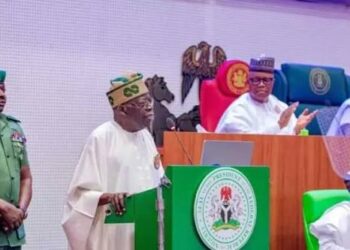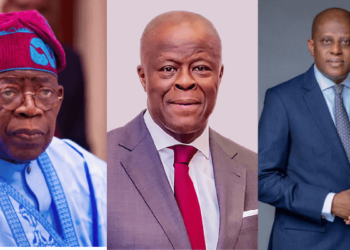Nigeria returned to growth in 2017 after suffering its first recession in a generation the previous year, data released from the country’s statistics office showed on Tuesday.
The OPEC member’s gross domestic product (GDP) grew by 0.83 percent in 2017 after shrinking by 1.58 percent in 2016, which was its first annual contraction in 25 years, according to the National Bureau of Statistics (NBS) data.
It returned to growth in the second quarter of 2017 but the recovery has been fragile since it is largely due to higher oil prices. The International Monetary Fund (IMF) said in December that the economy remains vulnerable.
“The growth rate still lags far behind where Nigeria should be,” said Razia Khan, chief economist for Africa at Standard Chartered, although she noted that the full-year growth was higher than the 0.7 percent forecast by her bank.
“Unless the 2018 budget is approved soon … higher oil prices alone are not going to be sufficient to provide a really strong lift to the GDP numbers,” she said.
Nigeria’s government has repeatedly said it intends to spend money on infrastructure projects to diversify the OPEC member’s oil-dependent economy.
President Muhammadu Buhari proposed an 8.6 trillion naira ($28 bln) budget for 2018, Nigeria’s biggest ever, to lawmakers in November. They are still examining the plans, which need to be returned to Buhari to be signed into law.
Delays in passing budgets, amid wrangling between the executive and legislature, are common in Nigeria.
Budgets under Buhari, who took office in May 2015, have been Nigeria’s largest ever. But economists say that has not translated into the sort of capital expenditure needed to boost the economy, such as improving infrastructure.
Growth in the last quarter of 2017 rose to 1.92 percent compared to a 1.73 percent contraction in the same period of the previous year, according to the NBS data.
Oil production rose to 1.91 million barrels a day (mbpd) in the fourth quarter from 1.76 mbpd in the same period of 2016, the statistics office said.
William Jackson, senior emerging markets economist at Capital Economics, said the low headline growth “masked significant shifts” within individual sectors.
“Non-oil GDP, which had contracted in Q3, returned to growth. This was largely due to improved strength in the agricultural sector and the end of the long contraction in wholesale and retail trade,” he wrote in a research note.












